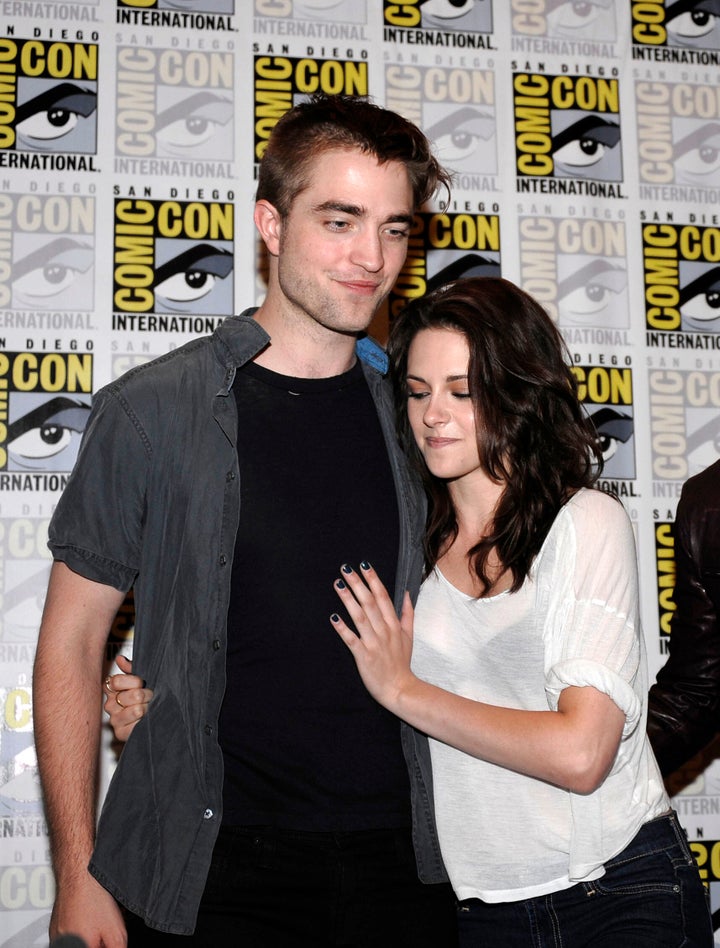
The books grew into a dark tower on my coffee table, one vampire novel after another. It was Christmas time, hardly the season of the year to focus on the undead, but I was getting ready to teach a new class on the Gospel in Pop Culture, and I needed to find out why Twilight broke publishing and box office records. Second only to Harry Potter in its worldwide reach, the saga is a romantic adventure about a girl, Bella, who falls in love with a vampire, Edward and is best friends with a werewolf, Jacob. I was barely a page into the first novel when I realized that there was a lot more going on than just a romance. This was a theological story, too. And it was full of messages about gender. In one of the many ironies of Twilight, the exemplary good family is not human. The parents, Carlisle and Esme Cullen, and their teenaged children are vampires. Though a family, none of them is "blood kin," at least not in the traditional sense of that term. The whole family was created the vampire way, through biting and venom, a terrifying and agonizing experience. Though they are blood sucking monsters the Cullens are models of loving, loyal, self-controlled, compassionate, and committed family members. Esme and Carlisle are mated for eternity. They are each other's other half. They believe in God. They even have a cross hanging in their living room.Bella's family, on the other hand, is riddled with issues because of her parents' divorce. Neither of her parents seems to know how to take care of Bella. On the contrary, she takes care of them. Bella wants desperately to become a Cullen and escape her blighted life as a human. Not only is Bella willing to die, she wants her beloved Edward to do the deed so that she can join him as an immortal. Unfortunately, Bella's desire to die at her beloved's hands and her acceptance of abusive behavior from Edward are part of a widespread theme of gender violence in the Twilight novels. From relatively mild boundary violations to gang rape, most of the women characters in Twilight have been victimized by men. (The theme of violence against women is even more pronounced in Meyer's subsequent novel, "The Host"). What is most disturbing about Meyer's treatment of this theme is that it is presented in ways that normalize, even romanticize such violence. Esme, Rosalie, Emily, and Alice have all been victims. Of these, Rosalie's story is most disturbing with its fallacies about rape. Edward routinely subjects Bella to the same kind of emotional whiplash, control, stalking, disrespectful speech, and physical intimidation that characterize too many girls' and women's lives in the real world. The reader learns eventually that Edward can justify some of his aggression as necessary to protect Bella from dangers she cannot see, but that revelation only reinforces to readers the dangerous message that violence at the hands of an intimate partner is sometimes okay.Despite the stereotyped and violent gender themes, there are still many good reasons to read these novels. Reconciliation is the premier gospel theme that binds the story together. A strong and appropriate critique of toxic faith and "organized religion" are additional important subtexts of the tale. For example the Cullens, not the humans, are the ones with the most explicit beliefs in God and concerns about the afterlife. Edward wants to save Bella's soul. Bella doesn't give a damn about salvation. She says Edward is her heaven. In time she comes to a form of faith because of her relationship with Edward.In many ways the Cullens reflect the kind of compassion, self-discipline, and communal consciousness that should characterize any congregation. What happens through the course of the four novels, with Bella as the catalyst, is that the Cullens' family ethos is multiplied beyond their own family unit. The small-scale reconciliation that Bella instigates between Edward and Jacob results in the greater healing of enmity between species. Bella is able to lead the Cullen family beyond even the accomplishments of the god-like Carlisle so that where there was once mortal (or immortal) hatred there now exist mutual familial bonds of love and trust.
While the Twilight series is first and foremost a love story, it is much more than that. This is an action packed adventure in which the spiritual and social concerns, disappointments and hopes of the next generation speak volumes. The novels cast a vision for a world in which a lion and lamb may nap together, and a child and a viper can be friends. Twilight concludes with metaphorical glimpses of a world freed from the powers and principalities, from the terror of religious leaders who declare "holy" war. It is a redeemed world in which vampires, werewolves, and teenage girls belong to one another -- a world made new through love, where we are all family.